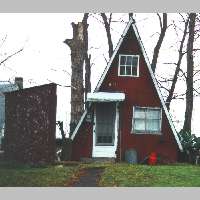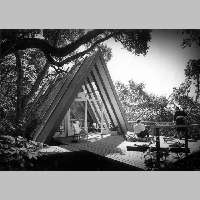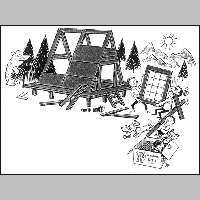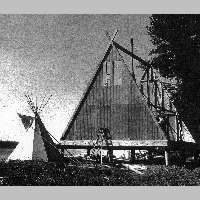

mr Chad Randl
Vernacular Vacation Homes: A Study of A-frames in the United States, 1950-1970
During the post-World War II era, many Americans found themselves in a position to build or purchase a second home in the country. The equilateral triangle A-frame concept was one of the most frequently selected designs. This paper presents the history of the A-frame as a popular vacation home between 1950 and 1970.
Early historic prototypes from Japan and Europe emphasize the A-frame’s ancient roots and the simplicity, strength and flexibility of the form. These characteristics appealed to middle class Americans who set out to build modest beach cabins, hunter’s shacks and forest retreats. The relatively easy construction and low costs appealed to amateur builders who wanted to construct their homes themselves.
From its roots in early 1950s California, the A-frame vacation home concept spread across the United States. The design was promoted in popular magazines and books as well as lumber company advertising campaigns and plan books. Because of the A-frame’s simplicity, hobbyists with little experience and local construction companies with little financial investment could easily build them. Before the trend faded in the early 1970s, A-frame construction had been adapted for small shops, restaurants and even churches.
Za povečavo kliknite na sliko
Click on picture to enlarge







